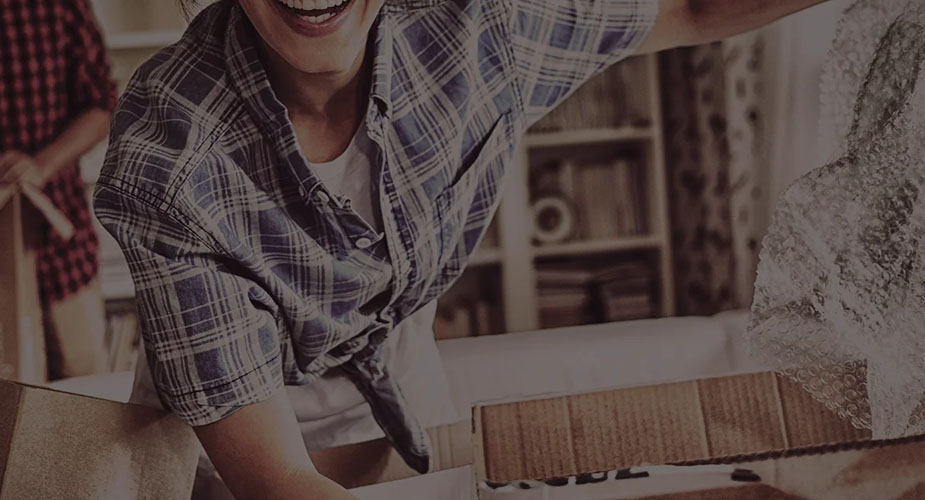- May 16, 2023
Moving to a new place can be both exciting and stressful. Whether it is for a job change, family reasons, or a new adventure, relocating your furniture is an essential part of the process. However, it can also be overwhelming, especially when it comes to ensuring that all your belongings reach their destination safely. That is where having a comprehensive furniture relocation checklist comes in handy. A checklist can help reduce stress, minimize risks, and ensure the safe transportation of your furniture. In this blog, we will discuss the ultimate furniture relocation checklist that you can use to prepare for your next move.
Section 1: Preparing for Furniture Relocation
Researching and Hiring a Reliable Moving Company:
The first step in preparing for your furniture relocation is researching and hiring a reliable moving company. You can start by asking for recommendations from friends and family or conducting an online search. Look for companies that have good reviews, a proven track record, and experience in handling furniture relocation. Once you have a list of potential companies, request quotes and compare their rates and services before making a decision.
Obtaining Necessary Permits and Insurance:
Depending on where you are relocating to, you may need to obtain permits and insurance to move your furniture. Some states or cities may require specific permits for oversized items or certain types of furniture. It is also essential to have insurance to cover any damages that may occur during transportation. Be sure to check with your moving company or local authorities to ensure that you have all the necessary permits and insurance.
Creating a Floor Plan of Your New Space:
Before you start packing, create a floor plan of your new space to determine which furniture will fit. This step is essential as it will help you avoid unnecessary stress and save time during the moving process. Measure the dimensions of your new space and compare them to your furniture. Determine which items will fit and which ones you need to dispose of or store.
Decluttering and Organizing Your Belongings:
Moving is an excellent opportunity to declutter and organize your belongings. Before you start packing, go through your belongings and decide which items you want to keep, donate, or sell. This step will help reduce the amount of furniture you need to transport and make the packing process more manageable. Organize your belongings by category and label them accordingly.
Packing and Labelling Your Furniture and Personal Belongings:
Once you have decluttered and organized your belongings, it is time to start packing. Begin with the items that you will not need until after the move, such as seasonal clothing or decorations. Use high-quality packing materials, such as sturdy boxes, bubble wrap, and packing tape. Label each box with its contents and the room it belongs to. This step will help you keep track of your belongings and make the unpacking process easier.
Section 2: Protecting Your Furniture During Transportation
Disassembling Furniture and Packing It Securely:
Disassembling furniture is essential to ensure safe transportation. Take apart larger items such as beds, tables, and shelves, and keep all the screws, bolts, and other hardware in a labelled bag. Wrap each piece in protective materials such as blankets, bubble wrap, or plastic wrap to prevent scratches or damages during transit.
Wrapping Furniture with Protective Materials:
Protective materials such as blankets, bubble wrap, or plastic wrap can help safeguard your furniture during transportation. Wrap each item carefully and securely to prevent any damages. For fragile items such as glass, mirrors, and artwork, use additional layers of protection, such as cardboard or foam.
Using Appropriate Packing Materials for Fragile Items:
Fragile items require special care during transportation. Use appropriate packing materials such as foam, bubble wrap, or packing peanuts to cushion delicate items. Use sturdy boxes and label them with “Fragile” to ensure they receive the appropriate handling during transportation. Make sure to pack fragile items separately and avoid placing heavy items on top of them. For extra protection, you can also place fragile items in wooden crates or use custom-made foam inserts.
Loading and Unloading Furniture with Care:
Loading and unloading furniture requires careful handling to prevent damages. Make sure to use appropriate equipment such as dollies, straps, and ramps to safely move heavy items. When loading the moving truck, place heavier items at the bottom and lighter items on top to prevent crushing or damaging the lighter items. Use furniture pads or blankets to protect furniture from scratches or dents.
When unloading the furniture, take the same care to ensure that the furniture is not damaged during the process. Carefully maneuver the furniture through narrow doorways and hallways, and avoid dragging the furniture on the ground.
Checking and Securing Furniture in the Moving Truck:
Before setting off, check the furniture to ensure that it is secure and won’t move during transportation. Use ropes, straps, or bungee cords to secure the furniture in place. Make sure that items are not stacked too high, as this can increase the risk of toppling or shifting during transportation.
When driving, take turns and corners slowly and avoid sudden braking or accelerating. This will help prevent the furniture from moving and minimize the risk of damage.
Section 3: Post-Moving Procedures
Unpacking and Assembling Furniture in Your New Home:
Once you arrive at your new home, the next step is to unpack and assemble your furniture. Begin by unloading the furniture from the truck and checking it for damages. Then, start unpacking your belongings, one room at a time. Use the floor plan that you created earlier to determine where each piece of furniture should be placed.
When assembling furniture, refer to the manufacturer’s instructions, and use the appropriate tools. If you are unsure about how to assemble a particular piece of furniture, consider hiring a professional to help you.
Checking for Damages and Filing Claims if Necessary:
After unpacking, check each piece of furniture for damages. If you notice any damages, take photos and document them. Then, contact your moving company and file a claim as soon as possible. Most moving companies have a limited time frame for filing claims, so it’s important to act quickly.
Setting up Utilities and Other Necessary Services in Your New Home:
Before settling into your new home, make sure that you have all the necessary utilities and services set up. This includes electricity, water, gas, and internet. Contact your service providers in advance and schedule the installation or activation of services.
Updating Your Address and Contact Information with Relevant Parties:
To ensure that you receive important mail and notifications, update your address and contact information with relevant parties. This includes banks, credit card companies, employers, and government agencies.
Getting to Know Your New Neighborhood and Community:
Finally, take the time to explore your new Neighborhood and community. This can help you feel more at home and make the transition smoother. Visit local parks, restaurants, and shops, and attend community events and meetings. This can also help you make new friends and connections.
Section 4: Tips for a Smooth Furniture Relocation
Start Preparing for the Move Well in Advance:
One of the best ways to ensure a smooth furniture relocation is to start preparing well in advance. This will give you enough time to research moving companies, obtain necessary permits and insurance, and prepare your furniture and personal belongings for transportation. It will also help you avoid the stress and last-minute rush that often comes with moving.
Communicate Clearly with the Moving Company:
Communication is key when it comes to furniture relocation. Make sure that you communicate clearly with the moving company about your needs, concerns, and expectations. This will help ensure that the moving company understands your requirements and can provide the necessary services. Be sure to ask questions and clarify any doubts you may have about the moving process, such as the timeline, costs, and logistics.
Label Boxes and Furniture Pieces for Easy Identification:
Labelling boxes and furniture pieces is crucial during furniture relocation. This will help you keep track of your belongings and ensure that they end up in the right room in your new home. Use labels to indicate the contents of each box, the room they belong to, and any special handling instructions. You can also use color-coded labels for each room to make it easier for the movers to identify where each item should go.
Keep Important Documents and Valuables with You during the Move:
Important documents such as passports, birth certificates, and insurance policies should be kept with you during the move. You should also keep any valuable items such as jewelry, cash, and electronic devices with you. This will help ensure that they don’t get lost or damaged during transportation.
Take Breaks and Stay Hydrated During the Moving Process:
Moving can be physically and mentally exhausting. It’s important to take breaks and stay hydrated during the moving process. Take short breaks every few hours to stretch your legs, eat a snack, or have a drink of water. This will help you stay energized and focused throughout the day.
Conclusion:
Moving to a new home can be an exciting and rewarding experience, but it can also be stressful and overwhelming, especially when it comes to furniture relocation. Having a comprehensive furniture relocation checklist can help minimize risks, reduce stress, and ensure the safe transportation of your furniture and personal belongings.
In this ultimate furniture relocation checklist, we’ve covered everything you need to know to prepare for a successful move. From researching and hiring a reliable moving company, to protecting your furniture during transportation, to post-moving procedures and tips for a smooth relocation, we’ve provided you with a step-by-step guide to make your move as seamless as possible.
By following this checklist, you can rest assured that your furniture and personal belongings will be in good hands and arrive safely at your new home. Remember to start preparing well in advance, communicate clearly with the moving company, label your boxes and furniture pieces, keep important documents and valuables with you, and take breaks and stay hydrated during the moving process.
We hope that this checklist will help you prepare for your next furniture relocation with confidence and ease. Happy moving!




